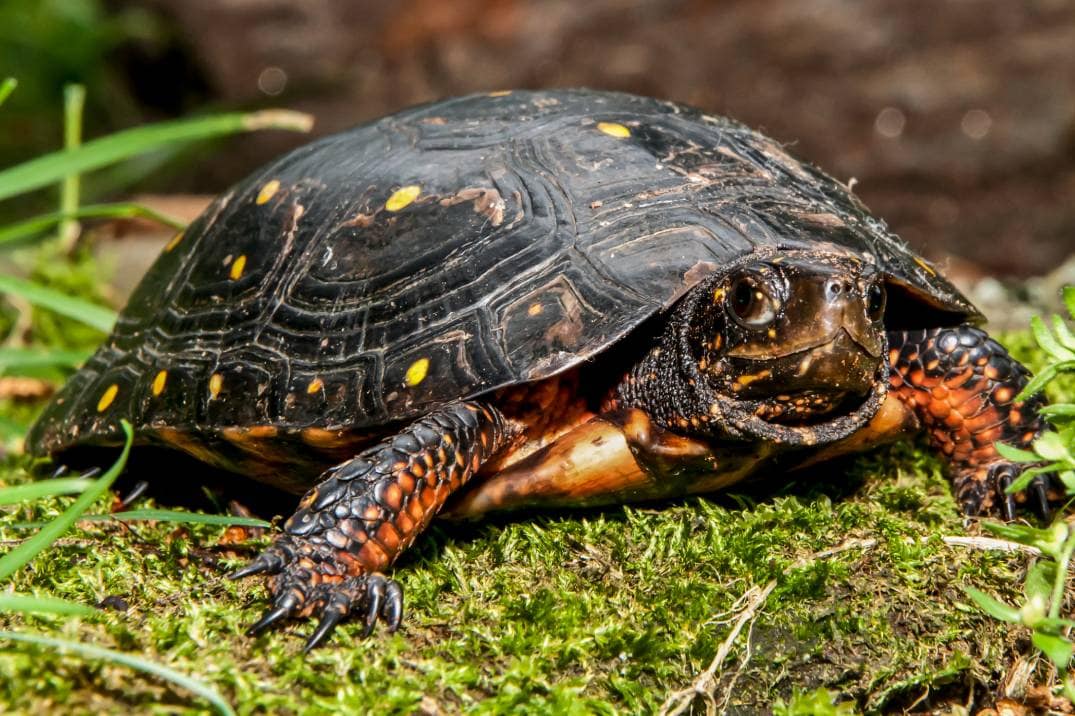Can Turtles Live With Fish? Temperament & Vet-approved Safety Guide

Updated on
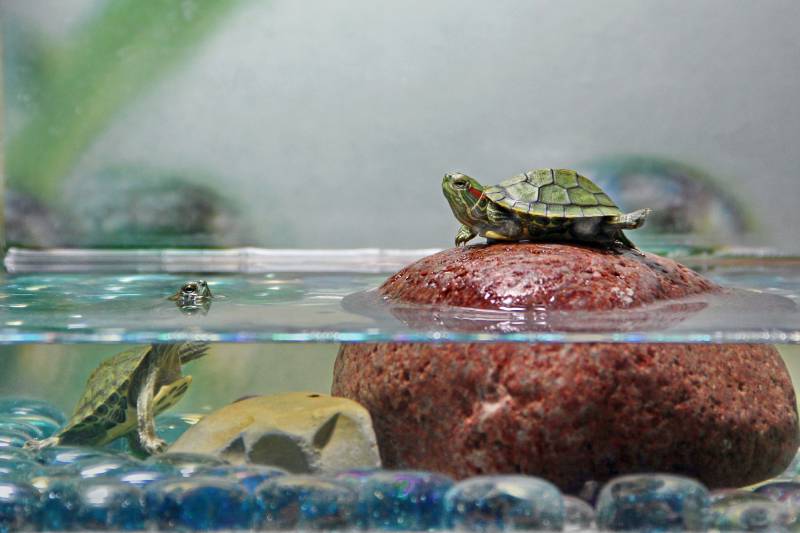
Click to Skip Ahead
Turtles make great pets, and there is something so peaceful about watching them glide effortlessly through the water. Watching fish in your aquarium can be just as entertaining, and you can easily become entranced by watching them. Combining the two could create a colorful environment, but can turtles live with fish?
Turtles and fish can live harmoniously in an aquarium together with a few considerations, such as the tank size and the species of fish. For them to co-exist, they will need enough space and a suitable environment, and the species need to be compatible to eliminate the risk of predation. In this article, we look at these factors to help you set up the perfect environment for turtles and fish to get along.
Do Turtles Eat Fish?
Yes, turtles eat fish in the wild, and they are their main food source. However, some species are more attracted to fish than others, while some rarely touch fish. Pet turtles are fed various feeder fish and eat fish in their tank if they consider them prey.
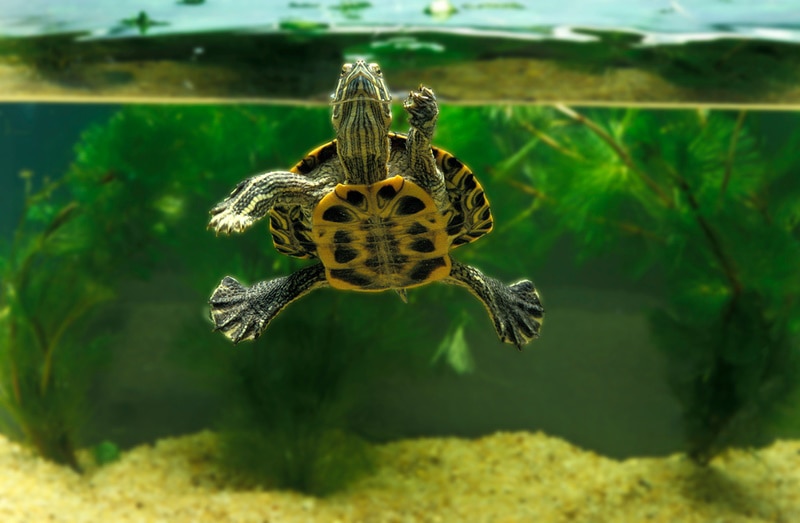
Can Turtles and Fish Live in the Same Tank?
The short answer is yes, turtles can live with fish, but there are a few exceptions. For turtles and fish to coexist in the same habitat, the two species need to be compatible, so they should ideally have similar living conditions and temperaments.
Some species of turtle can grow large and end up being a predator of your small fish, so your turtle shouldn’t be too large, and your fish shouldn’t be too small. When keeping turtles and fish together, neither should have special care needs such as changes in the water chemistry or different temperature needs; otherwise, living together won’t work.
Turtles That Can Live With Fish
As we mentioned before, species compatibility is vital if your turtle and fish are going to live together. Some turtles are more suitable than others, and some should never inhabit a tank with fish, such as carnivorous turtles like the snapping turtle that actively hunts fish to feed on. It is recommended to choose fish that aren’t too small and are known to be fast swimmers, so they can easily stay out of the turtle’s way. However, some species can live with fish, and the best turtles to keep with fish are usually:
1. Red-Eared Slider Turtles
Red-Eared Slider turtles are a popular choice that get along with most fish. Their aquarium size should be around 20-30 gallons, with areas for swimming and lounging.
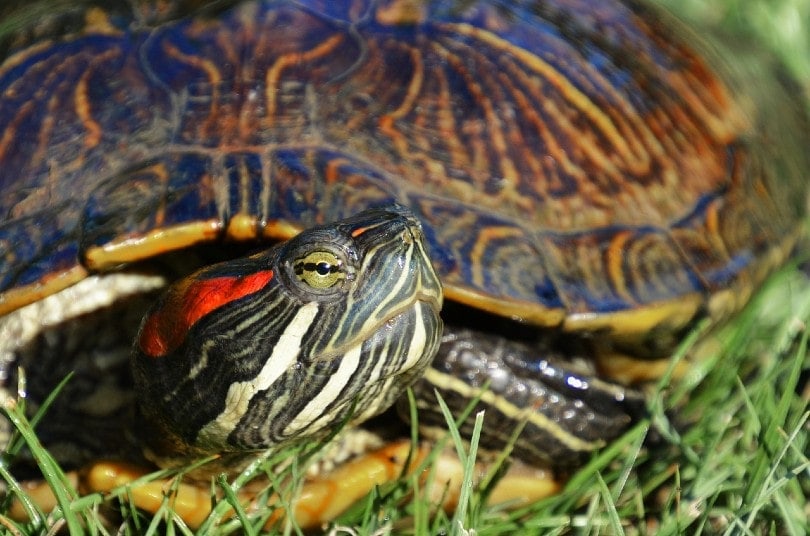
2. Painted Turtles
The Painted turtle is not as compatible with fish, but it can live peacefully with Guppies, Rosy Red Minnows, Endler’s livebearers, and Mollies.
3. Box Turtles
Box turtles require a large space to survive and live happily. They will need a tank that can hold about 20–40 gallons of water and a lot of vegetation to hide and hunt, which makes maintenance a little bit of a challenge.
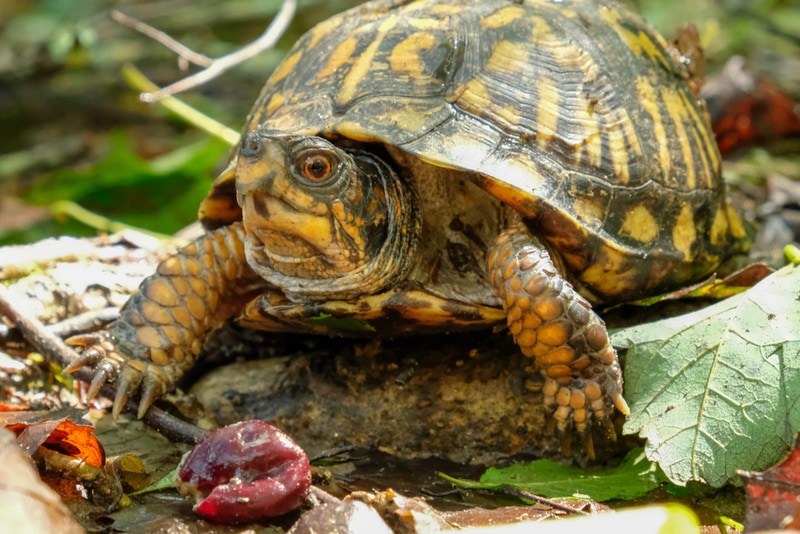
4. Musk Turtles
Musk turtles are another species of aquatic turtle that require very similar living conditions: a large tank of up to 40 gallons, a basking area, and enough space to swim around. Other species of Musk turtles, like the Razor-Back Musk, can live with fast-moving and patient fish, such as Rosy Barbs, Danios, and White Cloud Mountain Minnows.
Compatible Fish Species
Fish such as Guppies, Rosy Barbs, Mollies, Golden Barbs, Neon Tetra, Zebra Danios, and Algae Eaters are ideal for living in the same tank as a turtle. They will also need hiding spots made with PVC pipe or dense plants. Goldfish are not suitable tank mates for turtles since they are slow swimmers.
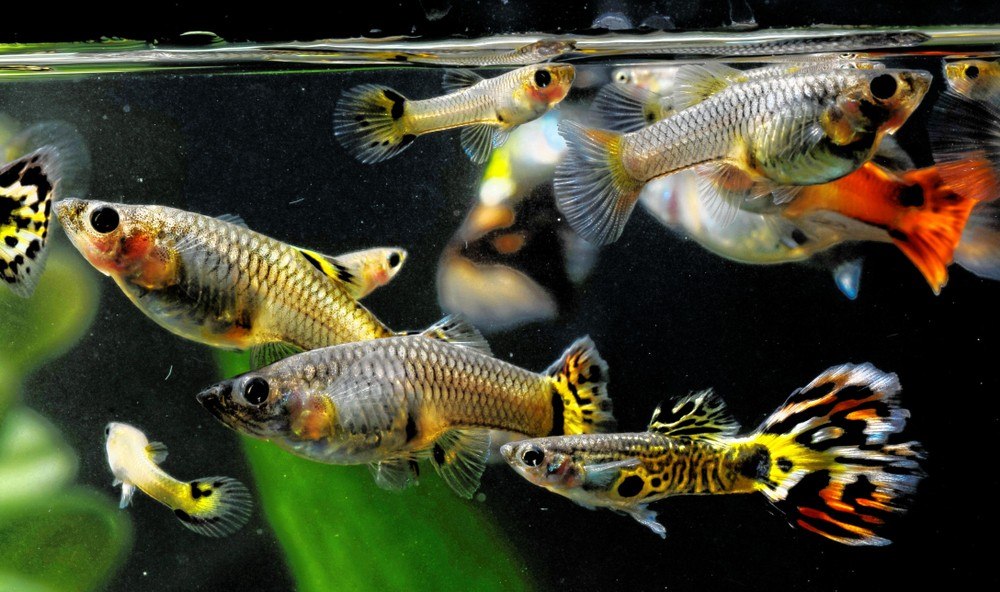
Providing a Safe Environment for Turtles and Fish to Live Together
Now that you want your turtle and fish to co-habitat, it’s time to set up the aquarium. The key for fish and turtles to live harmoniously involves careful planning, suitable living conditions, and compatibility. We have touched on compatibility, so here are some tips for setting up a safe environment:
Tank Size
Your tank size should be big enough to accommodate the needs of your turtle. This includes ample swimming room, dry land for basking, and a hiding spot. A general guide is to have 10 gallons of water for every inch of your turtle’s shell. You must also plan ahead since some turtles can get quite large.
If your tank is too small, it may strain the filter, leading to unpleasant living conditions, and your turtle and fish may not be happy in the same tank. Also, remember not to add too many fish, or your turtle may become overwhelmed. Ten or fewer fish for a 40-gallon tank should be plenty.

Tank Conditions
Your turtle’s tanks should be at the right pH level, typically 7.5, and their water temperature should be around 76°F for both species to be happy.
It is essential to maintain optimal conditions as turtles can be sensitive to changes in water quality. If the conditions aren’t ideal, it could lead to a shortened lifespan and other health issues. To ensure optimum conditions, you should regularly check the water’s pH, nitrate, and ammonia levels.
Filter System
Both species will produce waste in the water, and a quality filtration system is essential. Your filter system should be strong enough to suit the size of the tank and aquarium type. A canister filter is usually recommended for a large tank where it attaches to the outside so it doesn’t take up space inside and will clean the water in stages. Other filter options are sponge filters, hang-on filters, and fluidized bed filters.
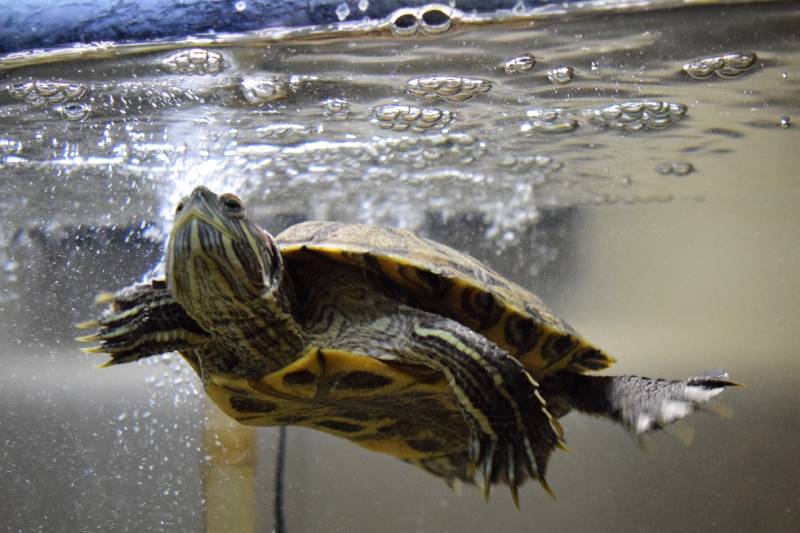
Light Source
Your turtle and fish will also need a good light source that provides UVB lighting and heat to regulate body temperature.
Basking Area
A basking area is a safe space for your turtle to dry off and regulate their body temperature. Choose an ideal spot where your turtle can climb up easily, and consider adding a basking lamp over the site.

Tank Decorations
Tank decorations are not vital for your turtle’s survival, but they add color and provide a great hiding spot for your fish. Some of the decorations you can add include rocks, plants, logs, and other fun items you may find, such as treasure chests or shipwrecks.
Feed Your Turtles Well
Ensure your turtle is fed well to avoid chasing fish. A general guide is the head feeding rule. Fill up a container the size of your turtle’s head to ensure it is not underfed or overfed.
Conclusion
Turtles and fish can live harmoniously together and enhance the visual appeal of your aquarium. However, you can’t put any fish and turtle in the same tank. The two species must be compatible and tolerate the same living conditions to co-exist in the habitat safely. With understanding and careful planning, you can easily create the perfect environment for your turtle and fish to live together.
See also:
Featured Image Credit: Rusinova Tatyana, Shutterstock




